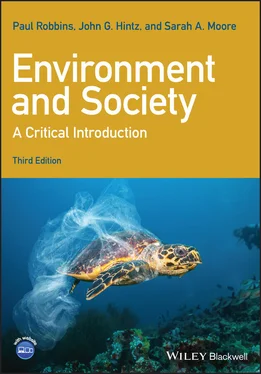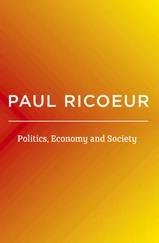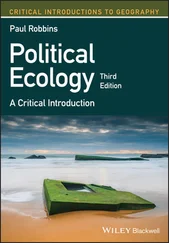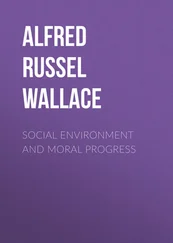The secret may be outside of strictly economic factors. Kerala has a higher than average level of women’s education and literacy and a higher than average availability of rural health care – especially for women. This is a universal phenomenon, moreover, and women’s education and literacy correlate significantly with lower fertility rates, a measure of the number of children the average woman in a place has over her reproductive lifespan (Figure 2.6). Where women’s rights are observed and protected, population growth ends.
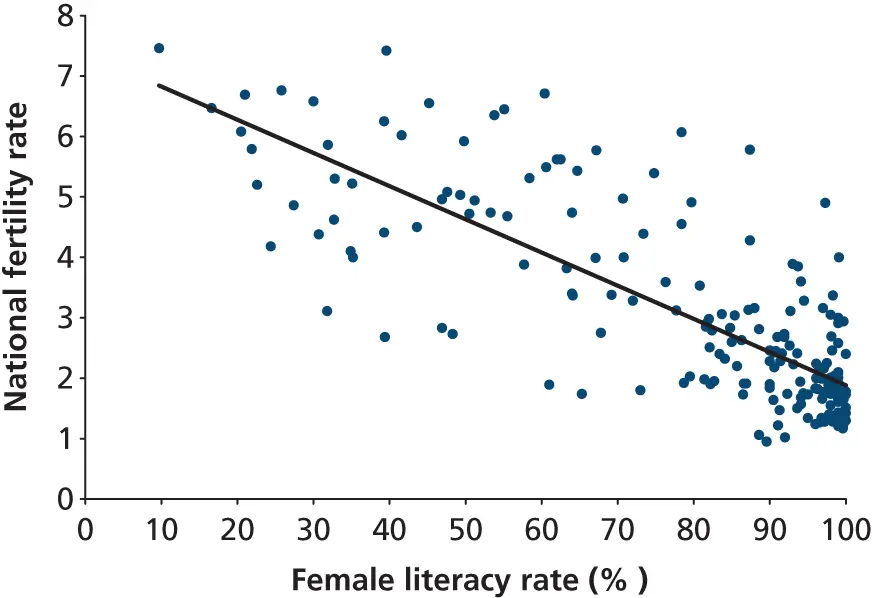
Figure 2.6 National fertility and female literacy rates around the world: 2006. As female literacy increases, and along with it women’s autonomy and employment, fertility rates fall to replacement levels. Source : Analysis by authors; Data from Population Reference Bureau (2008). World Population Data Sheet from www.prb.org/Publications/Datasheets/2008/2008wpds.asp(accessed 7 October 2009).
Fertility RateA measure describing the average number of children birthed by an average statistical woman during her reproductive lifetime
There are questions about whether correlation here is linked to causality. In countries with lower fertility rates, for example, women are freer to pursue education. Both women’s education and lower fertility may themselves be caused by other factors in culture and society. Even so, reduced fertility rates are also associated with the availability of condoms, the availability of women’s reproductive health care on demand, and the social/political “autonomy” of women (meaning social ability to make independent decisions) within households and communities. Put simply, it is increasingly clear that the political and economic condition of women in society is the best and most reliable predictor of demographic conditions. To the degree that population is an influence on the environment, the solution to ecological problems therefore lies in women’s rights around the world.
The Potential Violence and Injustice of Population-centered Thinking
Given that population may be an effect of other economic and political processes, that affluence and consumption have a large hand in determining the environmental impacts of populations of any size, and that some growth in population may lead to increased rather than decreased resources, what are the implications of thinking about environmental problems in strictly demographic terms?
For critics of population control, the implications are serious indeed. For such critics, the history of population politics and efforts at control are fraught with violence and injustice. Consider, for example, the Indian emergency during the period of Indira Gandhi’s rule in the 1970s. In 1975 Mrs. Gandhi declared martial law and made the end of population growth, through dramatic measures, including mass sterilization camps, the rationing of food and services contingent on family size, and even forced sterilization of some villages and slums, a central part of state policy. Most of these draconian measures were enacted on groups with the least political power, moreover, including marginal caste communities and the urban poor. International neo-Malthusian observers heralded the effort, with some American and European observers calling for logistical support of all kinds in this war on overpopulation (Hartmann 1995).
Yet none of these measures slowed or halted India’s population growth, which is only now slowing decades later as a result of complex political and economic factors, including women’s rights and access to education. All that these efforts achieved was a horrible violence to those poor and unfortunate enough to be caught up in the panic and a general distrust among all Indians for any discussion of population at all. So, the persistence of Malthusian thinking in the international press, in coercive government population policies, and in environmental analyses of various kinds appears to many critical observers to be dangerous indeed, as it distracts attention away from other driving forces (in economy, society, or politics) of environmental degradation. It also tends to unjustly vilify places and people who may have little or nothing to do with ecological change or negative environmental impacts (Robbins and Smith 2017). While there may be a billion people in India, for example, the United States, with one-quarter that population, emits more than five times the amount of carbon dioxide gas – a key driver of global warming (see Chapter 11).
More pointedly, critics maintain that making the politics of the environment a politics of population directs policy action, blame, and social control specifically onto women and their bodies. As Elizabeth Hartmann argues in her critical book Reproductive Rights and Wrongs , by seeking to restrict population, neo-Malthusians effectively seek to restrict women, and yet:
the solution to the population problems lies not in the diminution of rights, but in their expansion. This is because the population problem is not really about human numbers, but a lack of basic rights. Too many people have too little access to resources. Too many women have too little control over their own reproduction. Rapid population growth is not the cause of underdevelopment; it is a symptom of the slow pace of social reform. (Hartmann 1995, p. 39)
In this chapter we have learned that:
Human population growth holds serious implications for the sustainability of environmental systems, especially as growth tends historically to be “geometric” or exponential.
Environmental impacts of individual people and groups can vary enormously, owing to variations in technology and affluence.
Population growth has often led to increased carrying capacity, owing to induced intensification and innovation.
Carrying capacity and ecological footprint analysis can be used as indices to think about impacts of human individuals and populations.
Malthusian thinking has severe limits for predicting and understanding human– environment relations, since population is an effect of other processes, including development and the rights and education of women.
Even accepting important criticisms, of course, the question of population cannot be fully ignored. Given the lifestyle of the people in places like Phoenix, Arizona, where massive amounts of water are expended just maintaining peoples lawns, there may well be a limit to the number of people the world can maintain, and every person over that limit certainly taxes the landscapes, with implications for native biodiversity, for open space, and for clean air. Still, as such resources become scarce and more valued, an incentive to provide them may emerge. Environmental groups (like The Nature Conservancy) are increasingly buying lands throughout Arizona, for example, simply to protect them from development, leave them open and unspoiled, and allow them to provide habitat for the flora and fauna of the desert. Advocates of such an approach suggest that the very scarcity of these environmental “services” is the ticket to their conservation. It is to this argument – that markets can provision and produce scarce environmental goods – that we turn next.
1 What “crisis” did Malthus predict as inevitable? What was his proposed solution?
2 While Malthus blamed the poor for pending crises, contemporary thinkers like Paul Ehrlich place equal blame on the very wealthy. Why is this the case? (Hint: think I = P*A*T)
Читать дальше
